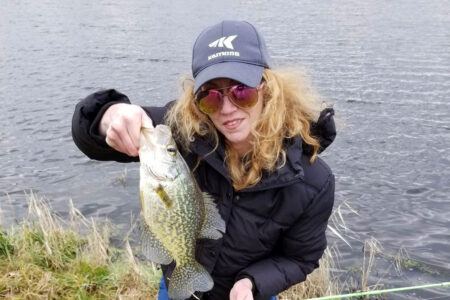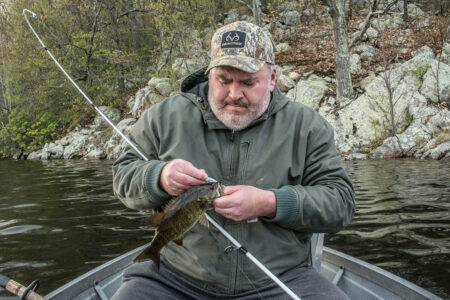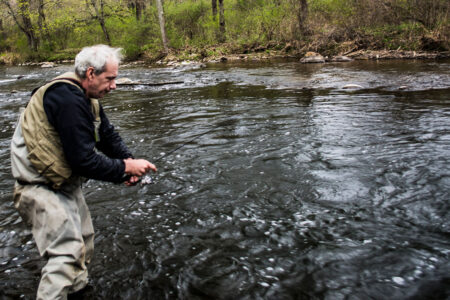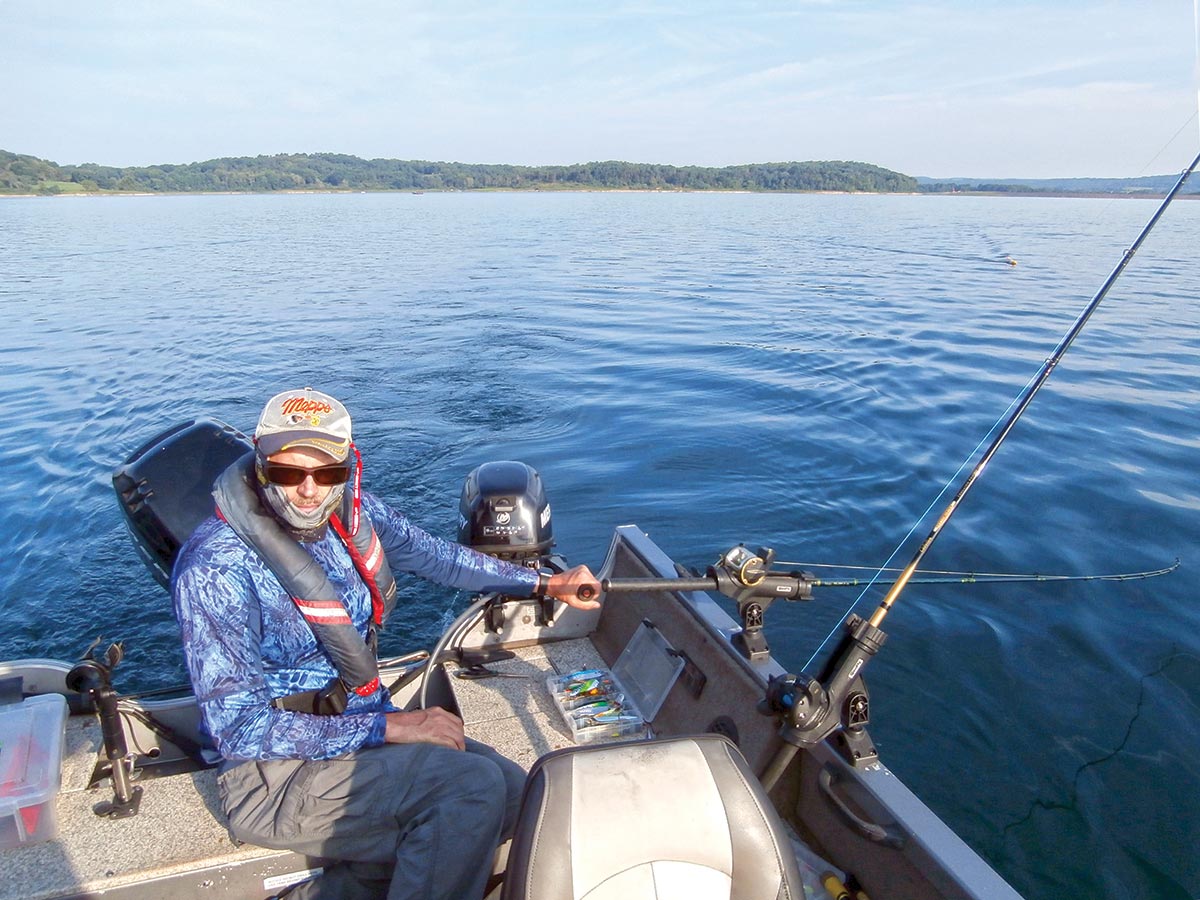
Adjusting your spread for bigger lake success.
We had no sooner launched out of Moosehead Marina onto Greenwood Lake that my buddy Dave Vollenweider was readying our tackle for this day’s experiment. With lines in the water as the sun started its ascent, it was almost immediate that I was calling out “Fish on” while feeling the wild shaking on the other end of an obvious walleye. Scooped into the net and released, it was quickly followed by another.
“Wow this is fantastic,” I eulogized as we netted and released a 5-pound ‘eye from alongside Vollenweider’s 16-1/2-foot Fish Hawk. “I guess there really is something to this method,” came Dave’s reply.
Now I should explain that Capt. Dave is a full-time high school biology teacher, and studied fisheries science at Iowa University. He is also a U.S. Coast Guard licensed captain, and owns and operates the Live To Fish Guide Service. He has a constant burning passion to fish, and to learn, and also to teach new methods of catching fish of all species. I guess you can say I am one of his lucky students.
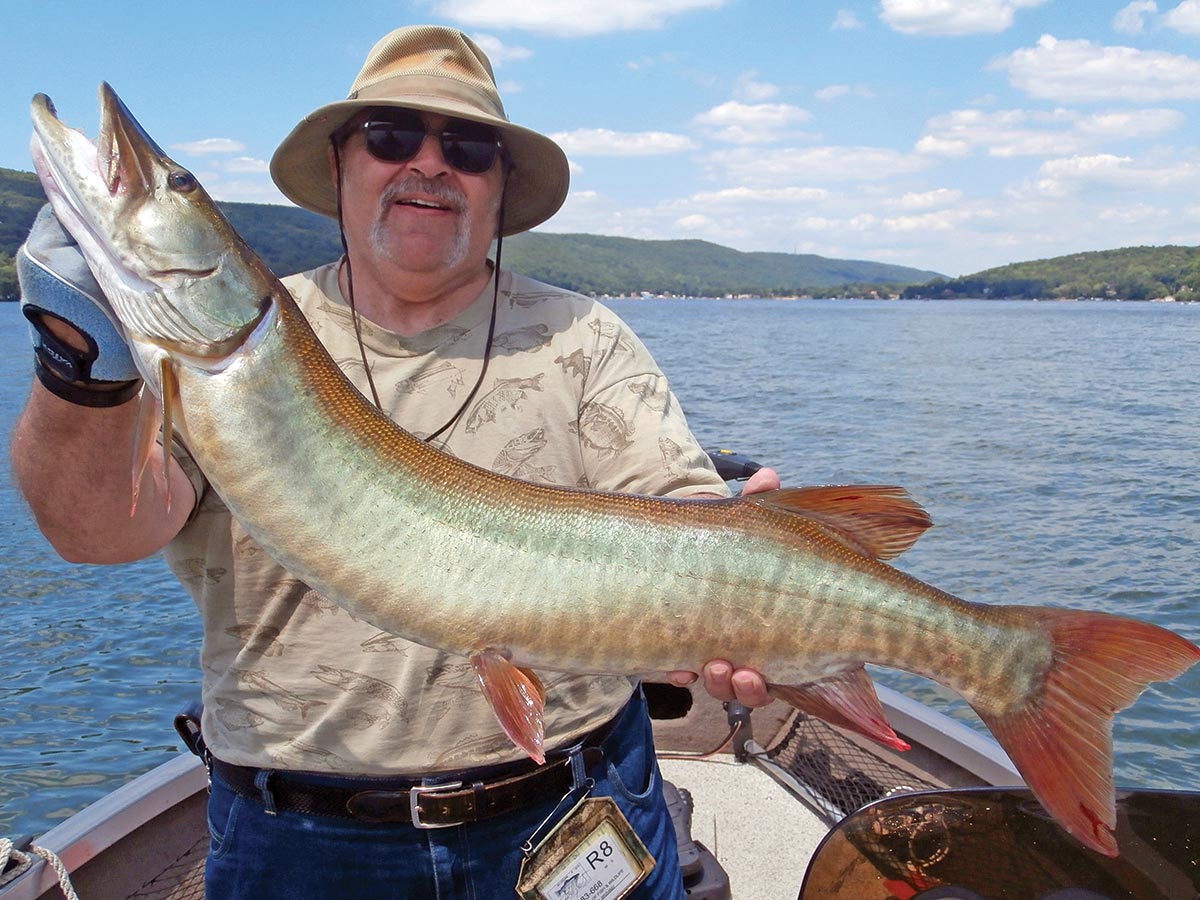
Structure Fishing
The method we were employing a half dozen years ago was the Buck Perry method, aptly named for the “Father of Structure Fishing.” Perry is credited with inventing the art of spoon plugging, a method that has put hundreds of thousands, if not millions of fish into as many angler’s hands. The lures that he invented look nothing like you’d expect your quarry to eat, yet the wide wobbling, digging action of his plugs prove nearly irresistible to many species, trolled on 4-1/2-foot stiff little rods, spooled with color metered line you can precisely put those plugs in the fish’s faces.
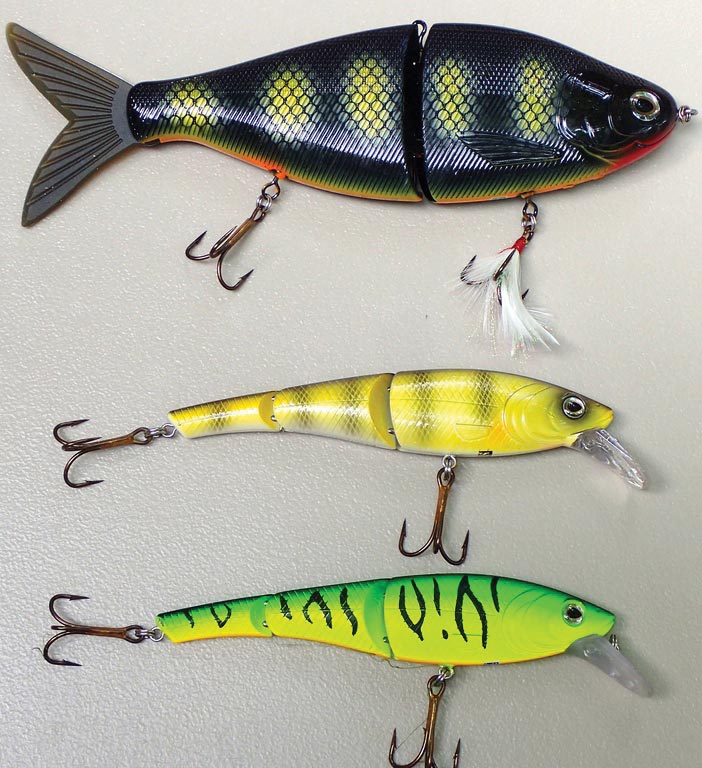
Over the years we have used those principals, slightly tweaked with a plethora of different lures and, boat speeds, to really have a creative trolling system able to put myriad different species into the livewell. Our first endeavors paid off handsomely with apex predators, switching out the spoon plugs for more conventional lures such as Bucher Depth Raiders, Livingston Pounder Predators, and Wiley Musky Killers. We soon figured out depth, speeds and presentations to place the baits into close proximity to these predatory eating machines, in a manner to make them accept our offerings.
As explained in prior articles over the years, trolling requires a certain mental toughness to stick with a chosen technique, with the confidence and ability to tweak certain proven methods when they’re simply not working on a given day. It can be something as simple as changing a lure or color, or perhaps pulling out of deep water to troll shallow to catch them during their feeding windows.
One such incident was this past fall while fishing Skunksville Reservoir; after making several passes through balls of baitfish with nary a bump, Dave reached into his bag of tricks and pulled out newly purchased clip on weights after I told him that in the past I had more than one musky try to extricate a hooked smallie that I was reeling in. So we switched to Wiley Musky lures that closely matched the color needed. Being shallow running lures, we let out 50 feet of line, clipped on the weights, let out another 50 feet and then made a bee line to the bait ball that we had just passed. Coming upon it we crossed our fingers as that glorious “rip rip” sound went off, and a few minutes of reeling later followed by a quick photo and release, and we finally removed our “skunk” from Monksville.
Learning to Adapt
Knowing when to make a change isn’t inherently known; it’s learned through experience. Experience to adapt when conditions are less than optimal. Case in point, we were recently fishing for crappies on Lake Hopatcong; the crappies, pulling out of the coves, were coming few and far between. We decided to troll over the weeds and found pickerel were takers, but not what we were looking for. So we set up to switch to open water adjacent to weed beds and quickly caught and released walleye. A quick change to Renegade Laser Minnows had Dave expertly playing and reeling in a hog of a hybrid striper.
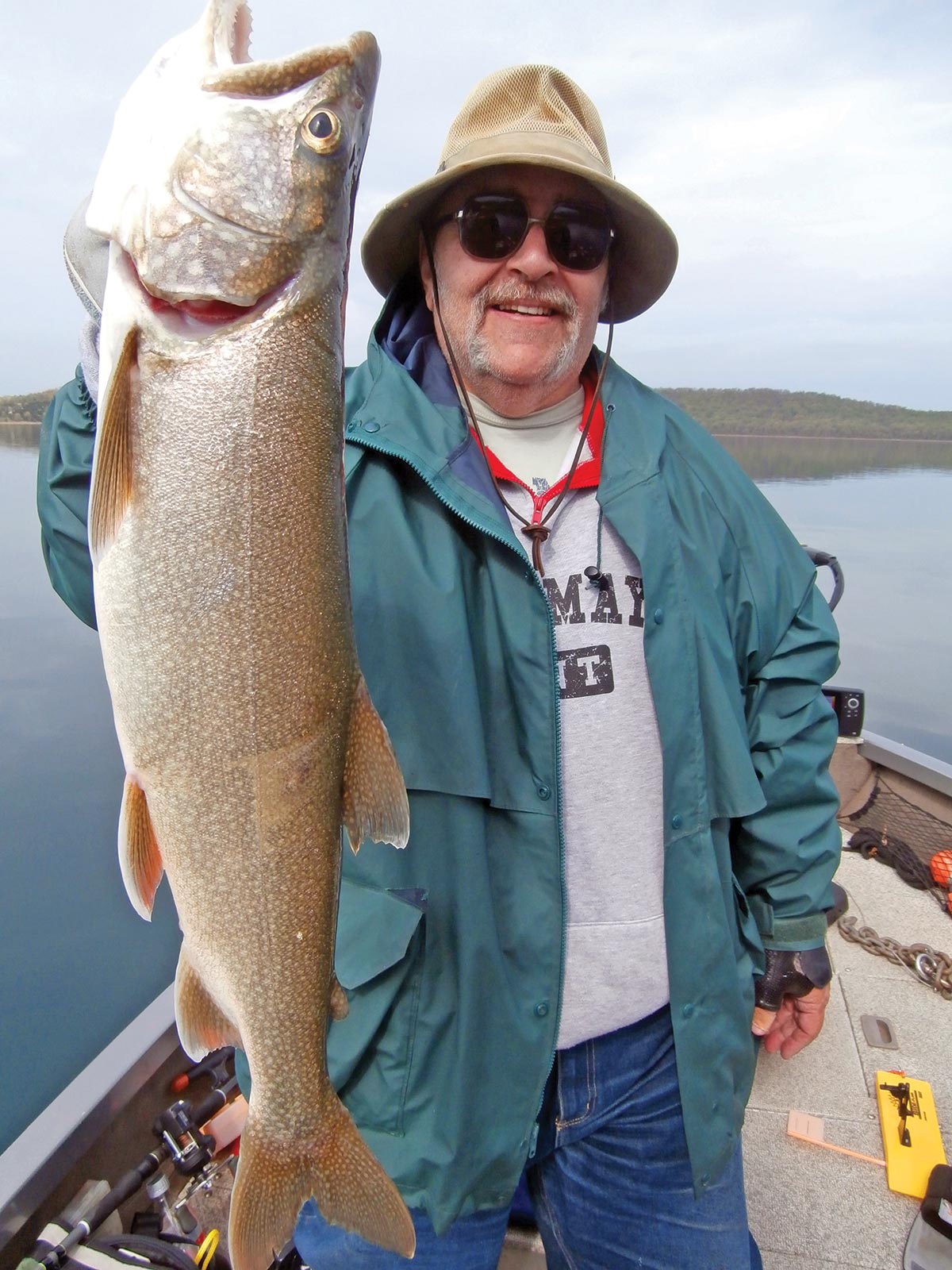
Being willing to make changes – even simple ones – can make the difference between a dismal day and an unforgettable one. Switch over to Round Valley in search of trout; we got there late because of a truck fire on Route 78, with a steady drizzle fast becoming a good rain fall. As we pulled in we were told “don’t bother, nothing’s biting,” as a host of boats were pulling out. Dave had an idea to set out four rods, using Sufix lead core line, we let them out accordingly, 1st rod two colors, 2nd rod three colors, and so on, as we planned to cover the water column from 10 to 30 plus feet deep.
A rainbow came quickly on a Renegade. The Mag-Lips ran deeper off of an “offshore” planer board which soon began to jostle with a nice laker bound for the net. With rain getting heavier and skies darkening, we decided to leave, but bringing back a system for finding the correct depth to find the larger fish, setting baits to the appropriate depth to bypass smaller stocked fish. Next time, we plan to jig for the bigger lakers once we find the school.
Creative trolling comes into play all summer long, be it deep water trolling for the mighty musky or trolling the thermocline for hybrid stripers, walleye, and perch (I should add of course, if fishing for muskies in warm water, be sure to have adequate equipment for quicker in-water release.). Just be ready to change what you’re doing to make your efforts successful!
As this is being written, I’ve just returned from a successful experiment on Greenwood Lake. After hours of trolling deep and switching shallow, Capt. Dave said “Lou, I’d like to try out extreme shallow trolling.” We reeled up our rods, changed the angle on the Scotty rodholders to the most extreme downward angle and placed two rods in the holders. We then let out 6 feet of line; anyone watching us would’ve thought that we were crazy.
I have to admit, I too thought that we were losing it. That was until on the second pass near “North Crick” produced an 8-pound-plus walleye that engulfed the lure just 18 inches under the water. Our collective eyes were nearly as big as his as we let him go.
There really is something to this creative trolling. It also paid huge dividends last summer on my birthday with a huge musky being proof positive that we weren’t actually crazy after all.
